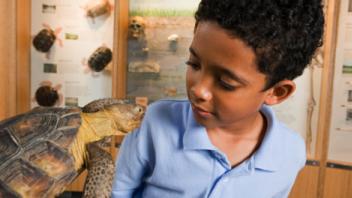First stop: Your public library
Whether you’re going to the zoo or to an amusement park, your library will have great nonfiction and fiction books about your destination. Full of colorful photographs and interesting facts, these books can provide great background knowledge to enhance your trip.
Second stop: Your destination’s website
Most locations have websites, and many include special sections just for kids. These often include maps, games, information about special exhibits and shows, and fun facts.
Third stop: Your house
Is anyone in your house a collector? Now is a great time to share your collections and talk about their history. Whether you collect coins, stamps or rocks, your child will enjoy sharing these collections with you. Grandparents, extended family, and neighbors may want to share their collections, too! This is a great time to talk about the different types of collections you might see at the museum you’re about to visit.
Fourth stop: Your kitchen table
After gathering information from books, websites, and your house, sit down as a family and plan your trip. Have your child help in the planning by using a calendar or for day trips, simple clock faces. “10:00, watch sea lions eat breakfast, 11:00 visit new camel exhibit, 12:30 watch elephants take a bath.” This is also a great time to write out a packing checklist.
A simple notebook made from lined or blank paper can help record the plans, and can also turn into an informal travel journal to take with you. Wherever you go, have a great time, and find simple ways to take literacy with you!
Download this article in Spanish
Subscribe to Growing Readers!
Get our free monthly parent tips — in English and Spanish — delivered right to your inbox!
